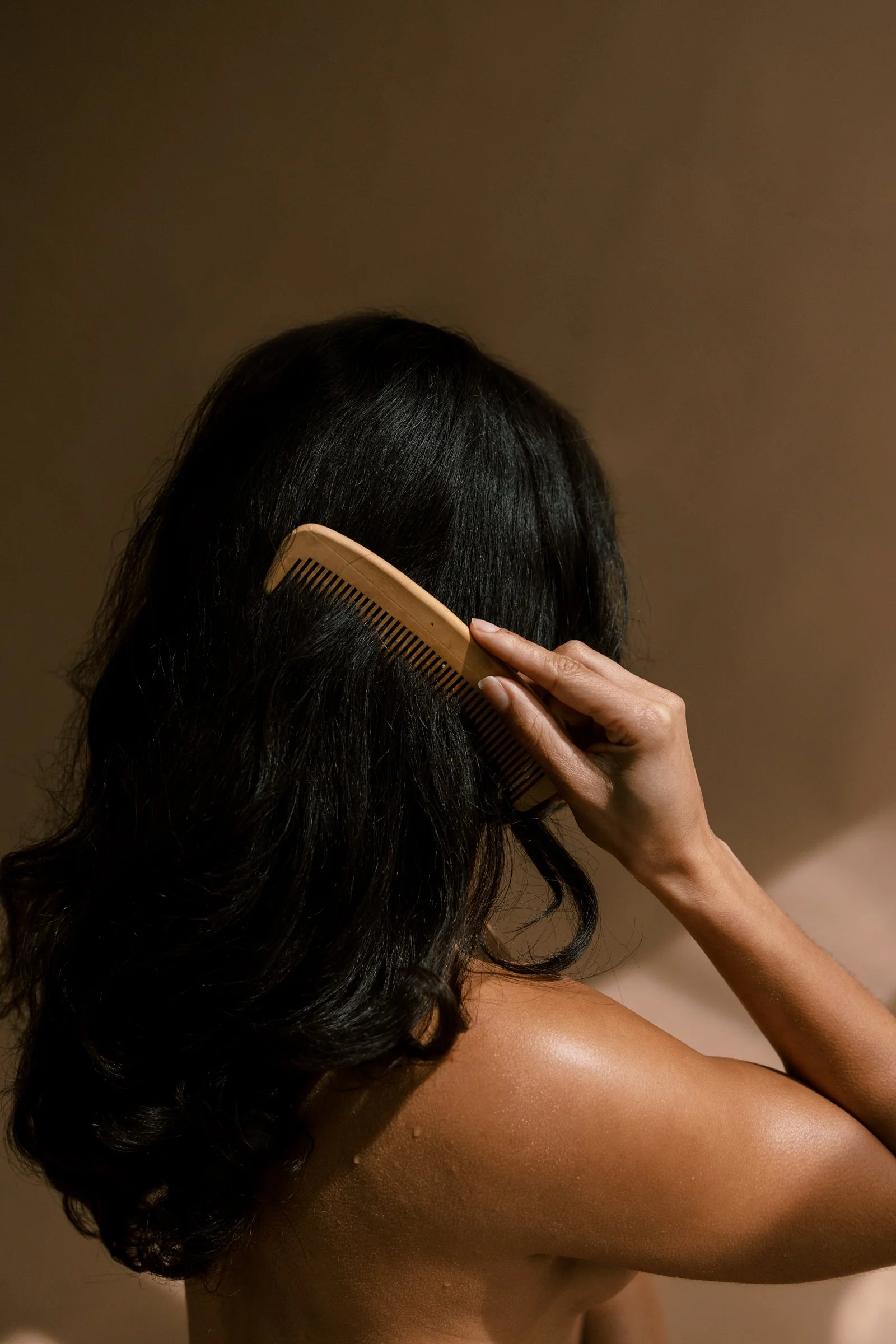Is Your Hair Loss Actually a Warning Sign?
What Midlife Women Need to Know About Hair Loss, Hormones, and Health
Let’s be real—losing your hair feels deeply personal. You might notice your part widening, more strands in your brush, or clumps collecting in the shower drain. It’s emotional, frustrating, and often dismissed with blanket reassurances like “It’s normal,” or “It’s just stress.”
But at Midlifesy, we don’t see hair loss as something to brush off. We see it as a signal—your body’s way of telling you that something deeper is out of balance.
Hair loss is rarely “just cosmetic.” It’s often tied to your hormones, stress response, metabolism, and nutrient status. And that means the real solution isn’t found in a single shampoo or serum—it’s in uncovering and treating the root cause.
Why Hair Loss Happens: Beyond the Surface
Your hair naturally grows in cycles:
Anagen (growth phase)
Catagen (transition phase)
Telogen (resting/shedding phase)
Problems arise when more hair shifts into the shedding phase than the growth phase. This doesn’t happen randomly—it’s usually your body’s reaction to stressors like hormonal shifts, inflammation, nutrient depletion, or thyroid imbalances.
And here’s the tricky part: hair loss is often delayed by 2–3 months after the trigger. Which means what you’re seeing today could be linked to something your body went through months ago.
The Two Most Common Types of Hair Loss We See
1. Telogen Effluvium: Sudden Shedding After Stress
This type often appears diffusely across the scalp, and is commonly triggered by:
Illness (including COVID)
Surgery or anesthesia
Childbirth and postpartum recovery
Crash dieting or rapid weight loss
Emotional trauma or prolonged stress
The shedding can be alarming, but the good news is it’s often reversible—if we identify and resolve the underlying stressor keeping your body in survival mode.
2. Androgenic Alopecia: Hormone-Driven Thinning
This is slower, more gradual, and often overlooked in women. It’s influenced by androgens like DHT (a byproduct of testosterone) and worsens with hormone shifts in PCOS, perimenopause, or postpartum.
You may notice:
A widening part
Thinning at the crown
Increased shedding around hormone transitions
Although it’s often called “genetic,” androgenic hair loss is also tied to insulin resistance, inflammation, and hormone imbalance—all things that can be tested and supported.
Nutrition: The Building Blocks of Hair
Even with a healthy diet, your body may struggle to absorb and use the nutrients your hair needs. We commonly identify deficiencies in:
Iron/ferritin
Zinc
B vitamins
Omega-3 fatty acids
Protein
Biotin
Stress, gut inflammation, or poor digestion can block absorption, leaving your hair follicles malnourished even when you’re eating well.
When Hair Loss Is a Bigger Red Flag
In our practice, hair loss often points to deeper dysfunctions like:
Subclinical hypothyroidism
Gut imbalances limiting nutrient absorption
Chronic cortisol elevation
Autoimmune activity
Scalp inflammation or microbiome disruption
Side effects of medications or birth control
Your hair is often the first place these imbalances show up.
Our Midlifesy Approach to Hair Loss
Hair regrowth isn’t just about products—it’s about addressing the root cause. That’s why we take a comprehensive approach:
Step 1: Testing That Matters
Full hormone panel (estrogen, progesterone, testosterone, DHEA, thyroid)
Micronutrient + inflammation markers
Gut health evaluation
Scalp assessment if needed
Step 2: A Personalized Hair Regrowth Plan
Your tailored plan may include:
Nutritional support + targeted supplements
Hormone optimization (when appropriate)
Regenerative therapies like PRF (Platelet-Rich Fibrin) to stimulate follicles
Peptides for repair and regrowth
Stress and nervous system support
Topical or in-office therapies customized to you
Why This Isn’t About Vanity
Your hair is part of how you feel connected to your health and identity. Thinning, shedding, or loss isn’t “just cosmetic.” It’s your body’s way of telling you something’s off.
And here’s the truth: when we restore balance in your body, your hair has the best chance to thrive again.
At Midlifesy, we listen, test what matters, and guide you with a root-cause strategy so you can feel like yourself again—inside and out.
✨ Ready to understand what your hair is really telling you?
Book your Clarity Consult™ and let’s get to the root of it together.




